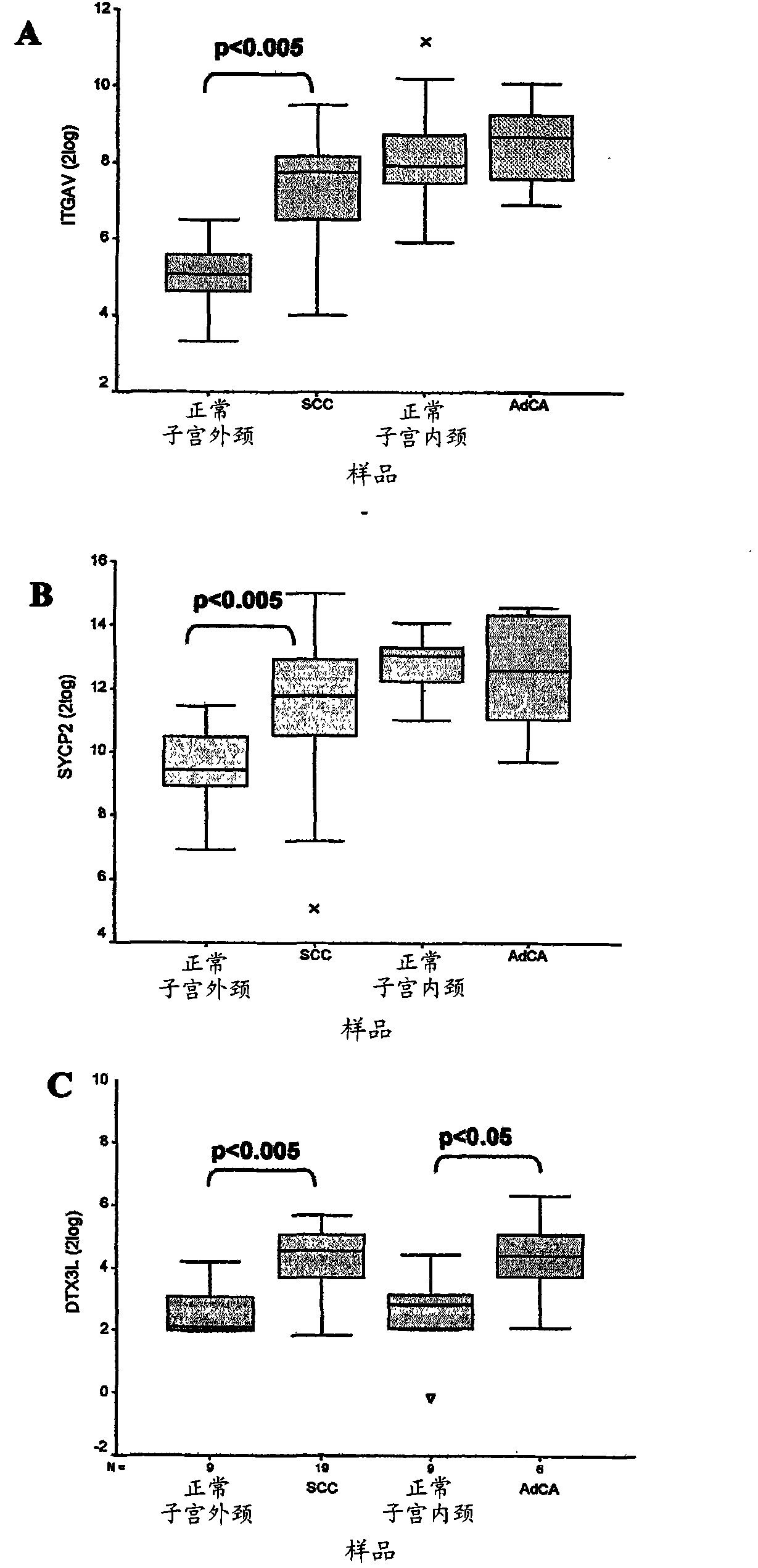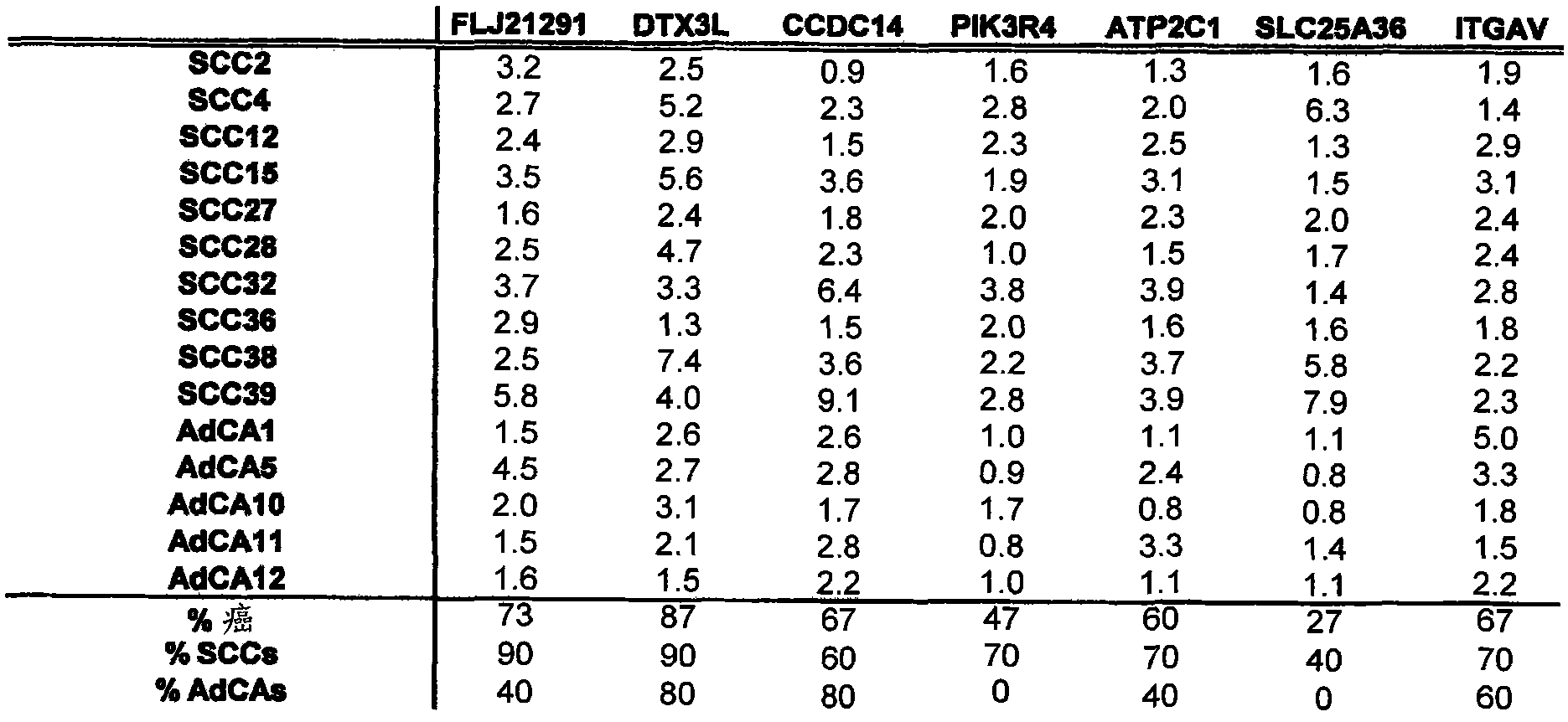New molecular markers for detection of squamous cell carcinomas and adenocarcinomas and high-grade precursor lesions thereof
A technology for squamous cell carcinoma, grade carcinoma, applied in the field of diagnostics, can solve the problem of lack of sensitivity in malignant diseases
- Summary
- Abstract
- Description
- Claims
- Application Information
AI Technical Summary
Problems solved by technology
Method used
Image
Examples
Embodiment
[0081] 1. Differentially expressed genes in tissues and cell lines
[0082] To confirm the differential expression of the genes listed in Tables 1 and 2, we measured the mRNA expression of the following genes by real-time RT-PCR analysis: ITGAV, SYCP2, DTX3L, SEMP1, DEK, ATP2C1, SLC25A36, and PIK3R4. For this purpose, samples from 22 cervical squamous cell carcinomas, 8 cervical adenocarcinomas, 15 high-grade cervical epithelial neoplasia (CIN) lesions, and 24 normal epithelial controls (n = 13 for normal RNA was extracted from neck n=11). ITGAV, SYCP2, DTX3L, SEMP1, DEK, ATP2C1, PIK3R4, and SLC25A36 showed significant overexpression in squamous cell carcinomas compared with normal ectocervix (see e.g. figure 1 ). Additionally, DTX3L showed significant overexpression in adenocarcinoma compared with normal endocervix ( figure 1 ). Analysis of RNA isolated from 15 high-grade CIN lesions enriched in dysplastic cells by laser capture microdissection confirmed increased express...
PUM
 Login to View More
Login to View More Abstract
Description
Claims
Application Information
 Login to View More
Login to View More - R&D
- Intellectual Property
- Life Sciences
- Materials
- Tech Scout
- Unparalleled Data Quality
- Higher Quality Content
- 60% Fewer Hallucinations
Browse by: Latest US Patents, China's latest patents, Technical Efficacy Thesaurus, Application Domain, Technology Topic, Popular Technical Reports.
© 2025 PatSnap. All rights reserved.Legal|Privacy policy|Modern Slavery Act Transparency Statement|Sitemap|About US| Contact US: help@patsnap.com



